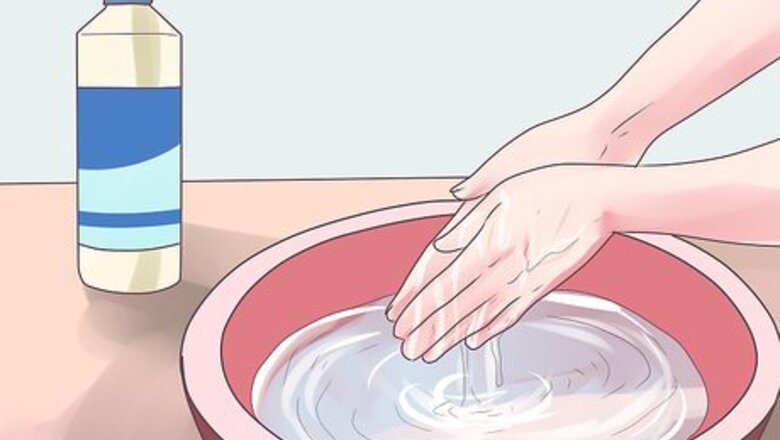
views
X
Trustworthy Source
Centers for Disease Control and Prevention
Main public health institute for the US, run by the Dept. of Health and Human Services
Go to source
Treating Water Warts at Home
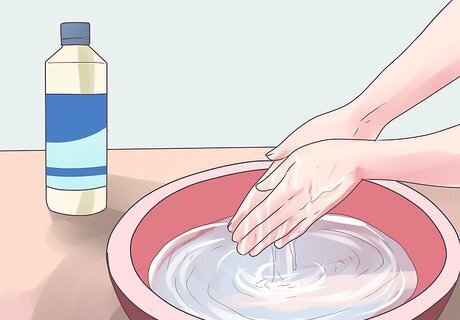
Use a Betadine scrub to kill the water wart virus. Betadine is an effective iodine-based antiseptic that helps to fight off the water wart virus and eliminate the warts. Betadine scrubs are available over-the-counter in most pharmacies. To use the scrub, wet your hands with a little warm water then rub the Betaine onto the infected skin. Do this for five minutes everyday until the warts disappear. This treatment is not recommended for people allergic to betadine or iodine. Alternatively, you can apply a pure iodine solution directly onto the warts, using a cotton pad. It's recommended that you prick each wart with a sterilized needle first, as this will help the iodine to penetrate the skin.
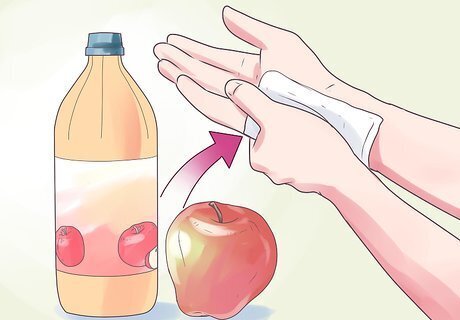
Use apple cider vinegar to dry out the warts. Apple cider vinegar is an effective home remedy for drying out and removing warts. The acid in the vinegar attacks the wart, causing it to peel away from the healthy surrounding skin, taking the virus with it. Although some studies support the use of vinegar for warts, more research needs to be done to determine whether it is safe and effective. To use apple cider vinegar, soak a cotton ball in the vinegar and place it on the wart. Cover the area with an adhesive bandage for 24 hours. When you remove the bandage the wart should be gone, though you may have a scab in its place (which should disappear in a couple of days). Apple cider vinegar can be used on all types of warts except those which are caused by sexually transmitted disease, such as genital warts.
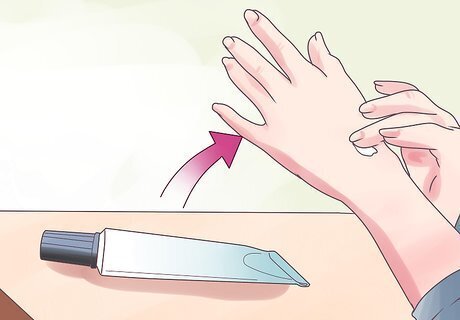
Apply milkweed cream to dissolve the warts. A proteolytic enzyme ( i.e. an enzyme that breaks down protein) found in the milkweed plant can digest and dissolve water warts. Find a milkweed cream in a drugstore or online and apply it to the water warts at least four times a day. While some people think milkweed has a positive effect, there are no studies or trials to support its use.
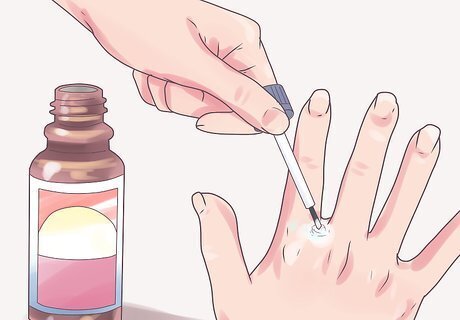
Use salicylic acid to soften the warts. Salicylic acid is an over-the-counter wart medicine used for treating mild skin conditions. Salicylic acid works by softening the keratin (a protein that forms the structure of the skin), in the warts and the surrounding skin. Once the warts have softened, use a pumice stone or an emery board to remove them. You can find topical salicylic acid in the wart aisle or section of your local pharmacy. Salicylic acid comes in a variety of concentrations. If your wart is on thicker skin, purchase a stronger product.
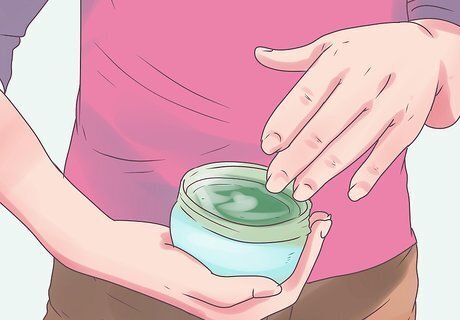
Use astringent skin creams to shrink the warts. Certain astringent chemicals (found in OTC and prescription skin creams) can be applied to the warts to dry them out, causing them to shrink. Some of the most effective ingredients to look out for include potassium hydrochloride and cantharidin.
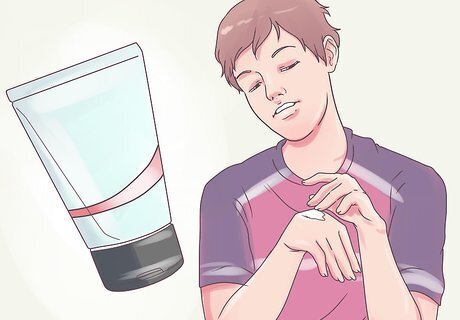
Experiment with retinoid creams. Applying a retinoid cream daily can help to remove water warts, as it disrupts the warts' skin cell growth. Retinoid creams can be purchased OTC or you can get a prescription for a stronger creams from your doctor.
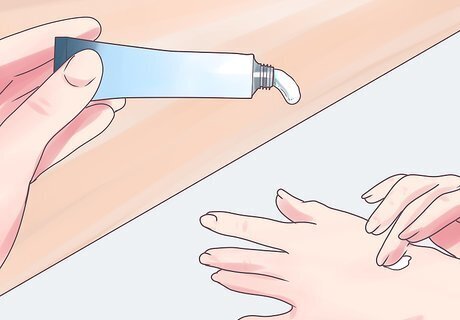
Try silver nitrate ointment. Silver nitrate ointment works by destroying the very thin layers of the water wart's tissue. Apply silver nitrate ointment daily until the water wart is completely gone.
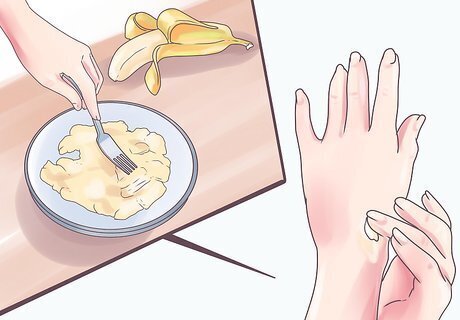
Use banana mash to get rid of the warts. Just like milkweed cream, banana contains a proteolytic enzyme that digests and dissolves water warts. Use a fork to mash up a ripe banana and apply the banana mash to the infected skin at least twice a day. Over time, the warts should begin to disappear.
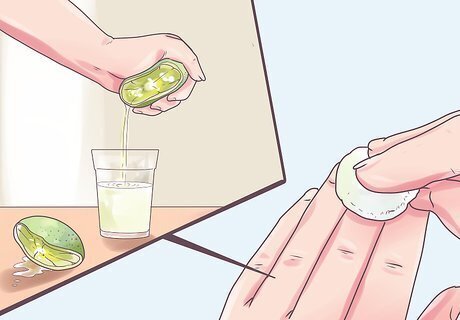
Try using lemon juice to eliminate the wart virus. The citric acid in lemon juice contains high quantities of vitamin C, which is believed to kill the virus causing the warts. Apply freshly squeezed lemon juice to the water warts at least three times a day, until they are gone.
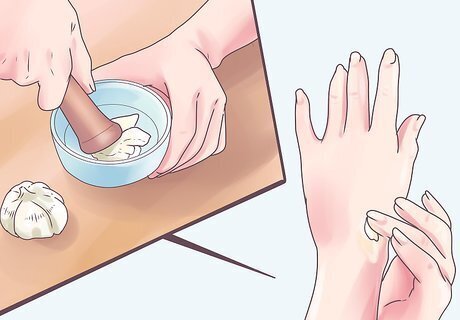
Cover the warts with crushed garlic. Garlic contains a substance called allicin that has antiviral properties that kill a broad spectrum of viruses including molluscum contagiosum virus, which causes the warts. Crush the garlic in a garlic crusher and apply it directly onto the water warts. Hold it in place with a bandage or a piece of tape for 24 hours. Remember to change the garlic and tape daily.
Having Water Warts Removed
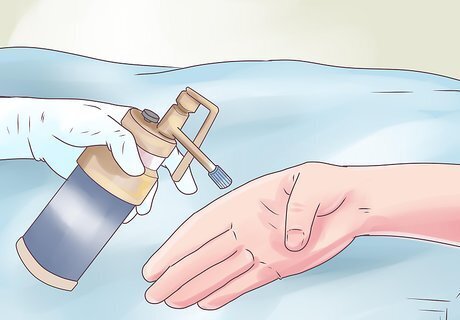
Have the warts frozen off using cryosurgery. With cryosurgery, liquid nitrogen is used to freeze and destroy the water warts. After the treatment, a blister may form at the site of the wart, but this should fall of within 2 to 4 weeks. Be aware that cryosurgery can be a little painful — the application of liquid nitrogen may cause burning or stinging at the treated site, which may persist for a few minutes after the treatment. It's also important to be aware that scarring or loss of color at the site of the wart is a possible complication of this treatment.
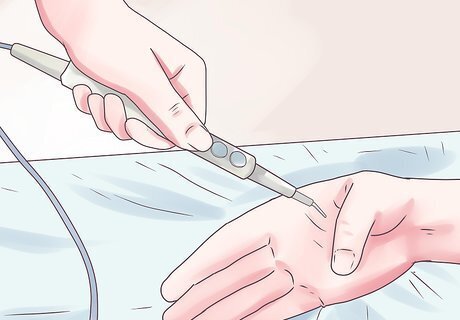
Ask your doctor about electrodesiccation. Electro desiccation is a medical treatment for water warts that uses a probe to send electrical currents into the wart. The electricity causes the blood vessels inside the wart to die off, causing the wart to disappear.
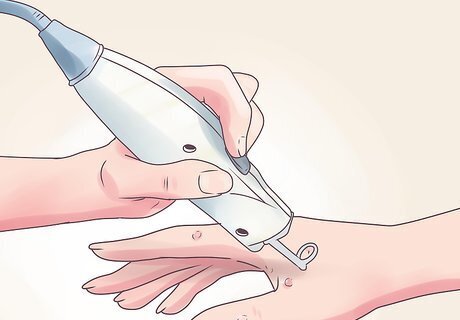
Opt for pulsed dye laser therapy to remove multiple warts. Pulse dye laser therapy is a fast and effective treatment option for people who suffer from multiple water warts. The laser uses heat energy to destroy the wart and the red blood cells that feed it. The skin surrounding the wart may take up to two weeks to heal, but there should be no scarring on discoloration. The pulsed dye laser is fast and efficient, but its expense makes it less cost effective than other options.

Consider getting an injection of antigens. Sometimes, your doctor will suggest a treatment that involves an injection of mumps, candida or trichophyton antigens at the site of the wart. These antigens stimulate your body's immune system to create antibodies that will fight the infection caused by the water wart virus.
Understanding Water Warts
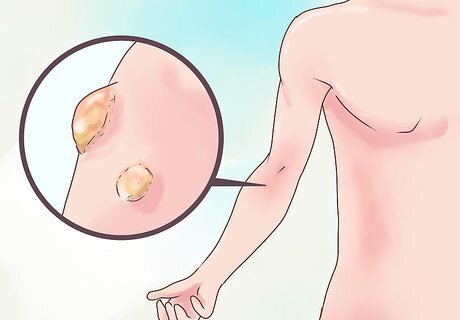
Recognize what water warts look and feel like. Water warts appear as pink colored, dome-shaped lumps, which can appear anywhere on the body. The warts tend to grow in clusters, leading to pear or dome shaped clumps. The most characteristic feature of water warts is that they have a visible hole or point right in the center. The medical term for this is "central umbilication". Water warts should not feel painful, but the virus may trigger an immune response, causing the wart and the surrounding skin to feel itchy.

Understand how water warts are transmitted. The water wart virus is contagious, meaning it can easily be transmitted from one person to another. The water wart virus can be transmitted through fomites (inanimate objects capable of carrying infectious organisms) such as towels, bedsheets, doorknobs, clothing, etc. The virus may also be transmitted through sexual contact. The water wart virus can also spread from one part of your body through the other, via auto-inocculation. This happens when you scratch or touch an existing wart, and then touch other parts of your body, causing multiple lesions.
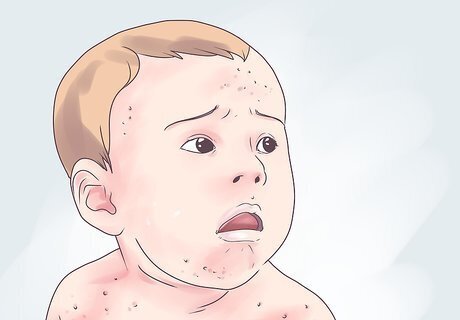
Be aware if you are at risk of developing water warts. This common viral disease has a higher incidence in: Children: Children are particularly susceptible to auto-inoculation, and may have widespread clusters of lesions. The water wart virus spreads most easily through direct skin-to-skin contact, but kids can get it by touching objects that have the virus on them, such as toys, clothing, towels, and bedding. It can also spread in water, so kids often get water warts from swimming in a public pool. Sexually active adults. Water wart infections are often transmitted through sexual intercourse and affect the genitals, buttocks, lower abdomen and inner thighs. In rare cases, infections are also found on the lips, mouth and eyelids. People with immune deficiencies: People whose immune systems have been weakened by HIV, cancer treatment, or long-term steroid use are more vulnerable to infection by the water wart virus.
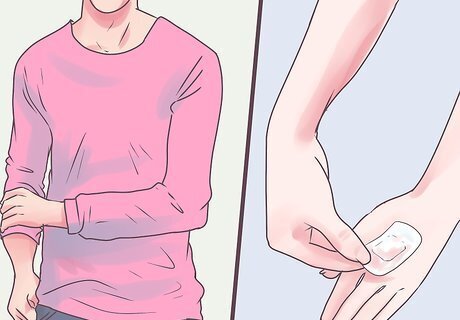
Take steps to prevent the spread of water warts. Since water warts are contagious and can spread to other body parts, an infected person should follow a number of precautions to prevent the water warts from spreading or being transmitted to another person: Try to cover each growth with clothing or a watertight bandage, especially before participating in activities in which equipment is shared or skin contact can occur, like swimming and wrestling. Keep the areas with growths clean and change each bandage daily or when it becomes dirty. Do not scratch or rub water wart growths, and regularly wash your hands with antibacterial soap. Do not shave over areas that have bumps, as the razor could easily spread the virus from one part of the body to the other.
















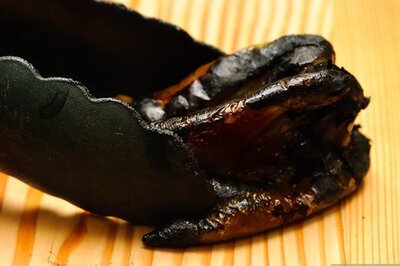
Comments
0 comment